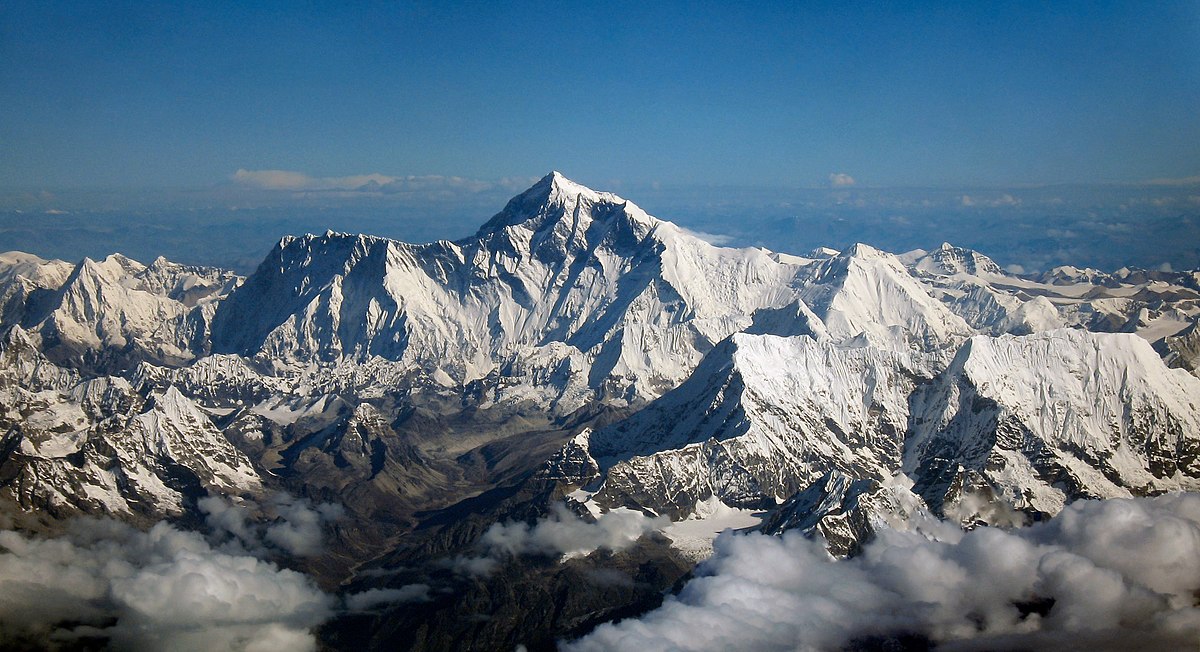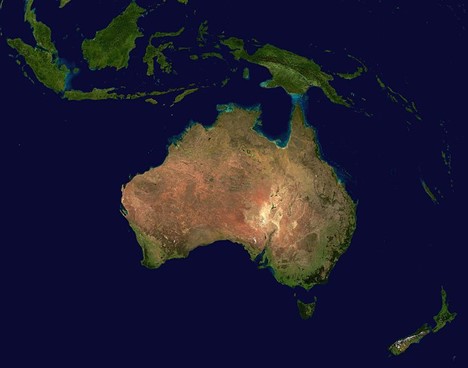Overview
Ice, melting. The glint of the sun, reflecting off of a snowy waste. It is not the Arctic, nor the South Pole. Instead, it is an area of the world deemed the “Third Pole” by many environmental scientists. Nestled high in the mountains, the glaciers of the Himalayas provide water for some of Asia’s mightiest rivers, including the Indus, the Yangtze, and the Mekong.
However, there is a problem: they are melting. Climatologists predict that glacier run-off from the Himalayas will increase until around 2050, after which it will rapidly decrease as glacier shrinkage accelerates. Over 1.3 billion people, a fifth of the world’s population, are in danger of losing access to what is essentially one single, vast source of water. The long-term dynamics this sets in motion are destabilizing for all of Asia and a grave, unrecognized crisis for U.S. national security through the widespread regional instability it will spark.
Growing Water Scarcity
The reason for this comes in two parts. First, as seen in the Arab Spring, threats to fundamental basics like water can topple even seemingly stable regimes. For example, in 2017 the Bolivian environmental minister resigned in the midst of a crippling drought and violent street protests. Transnational terror groups and criminal networks have also likewise leveraged water instability to achieve strategic gains—in 2016 ISIL launched attacks on water supplies in Libya that forced citizens to dig through street pavements in order to access crippled water mains.
Many of the countries in this region—such as Myanmar and Afghanistan—have similarly difficult legacies of war, civil unrest, and economic instability. Threats to their water supplies are two-fold—not only will water scarcity deprive people of vitally needed hydration, but it also cuts at the fundamental viability of irrigation-based agriculture—long a fundamental component of agricultural methodologies in many countries throughout the region. For example, irrigation-fed crops were a hallmark of the Indus River Valley culture—one of the great fonts of civilization in Asia, along with the Yellow River Valley in Mainland China. States in Asia continue to depend on water for economic viability. In 2011, for instance, Cambodia used almost 94% of its water exclusively for irrigation and livestock. Recent horrific floods in Pakistan—according to satellite imagery, over 30% of the country is currently underwater—only highlight the danger that climate change plays in exacerbating this crisis.
A severe domestic or environmental crisis in any one of these countries could threaten U.S. national security through its potential to spark region-wide insecurity. For example, terrorist groups seizing control of WMDs in unstable states like Pakistan is a perennial concern, while intra-regional conflict over diminishing water resources, especially involving treaty allies like Thailand, risks drawing the U.S. into a wider conflict. If multiple countries were to experience crippling food and water shortages at the same time, the implications would be staggering. Disturbances at this scale simply have not occurred in Asia since World War II—the Vietnam War was confined to Southeast Asia, and the Korean War only involved the Korean Peninsula. In contrast, Himalayan glacial melt threatens every country from Pakistan to China—an arc of countries that comprises one of the most densely inhabited population belts in the entire world.
To give a better sense of the scale of this problem, this map presents an overview of the river basins in Asia that are sourced from Himalayan glaciers:

And here is a political map of Asia for context:

As can be seen from these two maps, the threat to Himalayan glaciers is not regional—it threatens the entire continent of Asia. Only North Korea, South Korea, and Mongolia will be spared. Famine and instability, potentially even mass starvation, threaten to spread unchecked across the continent in coming years if this melting is not stopped.
However, the impending water crisis in continental Asia is only the first part of the problem. The second is where most of these headwaters lie: the Tibetan plateau. Ever since China reoccupied Tibet, it has taken steps to solidify its control, which has given it a stranglehold over the sources of key rivers like the Indus and Mekong. What is more, the Chinese government, in keeping with its emphasis on territorial sovereignty, has treated water inside of its borders as a sovereign resource—the needs of downstream countries like Pakistan do not matter. Part of this stems from Chinese concerns about reliable domestic access to water— in 2017 alone, scientists estimated over 80% of China’s groundwater resources were unfit for human consumption. In fact, so grave is China’s sensitivity to its scarcity of water that it is “one of only three UN member countries to reject the notion that states have the right not to be adversely affected by activities of upstream countries.”
A similar scene is already playing out today. The Nile starts in Ethiopia, but multiple countries—most importantly Sudan and Egypt—also depend on its waters. For years, Ethiopia has been planning a vast hydroelectric dam close to the source of the Nile. While this would provide Ethiopia with much-needed electricity, policymakers in Egypt have repeatedly threatened to attack Ethiopia if they build the dam, fearing that it would deprive Egypt of the water it needs to survive.
If China did a similar thing, such as by damming up the headwaters of the Mekong to make up for a decrease in outflows of the Yellow River—Pakistan and much of Southeast Asia would be devastated. The resulting refugee flows, instability, and potential conflict between nuclear-armed countries will threaten U.S. interests throughout the region. Worryingly, China has already been caught ‘turning off the tap’ of the Mekong, leading to prolonged drought in of Southeast Asia. As glacial runoff—expected to peak by 2050—increases, China will be increasingly tempted to exercise this leverage, with devastating consequences for downstream countries.
The U.S. Response
If these parallel crises —continental-wide discontent and sweeping, intra-regional warfare over dwindling water—are to be avoided, U.S. policymakers must act now to head off the worst of the crises.
Firstly, policymakers must devote more funding to monitor the rate of Himalayan glacial decline—they are some of the least studied glaciers in the world. Only with accurate measurements of remaining water reserves can regional governments in Asia know the depth of the crisis they face.
Secondly, U.S. policymakers must accelerate efforts to combat climate change and reduce the amount of greenhouse gases currently in the atmosphere. Since climate change is the primary cause of the melting of Himalayan glaciers, any reduction in the rate of increase in Earth’s temperature will slow the decline of glacial runoff, giving Asian countries more time to adapt. Building upon the momentum of the COP 26 summit, the Biden administration must expand efforts to increase the use of green and renewable energy and speedily implement recently passed climate change legislation—an effort that has taken on increased urgency given the energy crisis facing the developed world.
Finally, the U.S. should accelerate efforts to help regional farmers conserve water and use it as efficiently as possible. Farmers in Western agricultural states like California are already experiencing crippling, historic droughts, and have learned painful lessons in water conservation—these represent a source of human capital that the U.S. can draw upon. Furthermore, U.S. government agencies already have a strong presence throughout much of the region. For example, the U.S. Embassy in Bangkok is one of the largest U.S. diplomatic presences abroad, and organizations like the U.S. Agency for International Development (USAID) are well-positioned to facilitate the transfer of water conservation management techniques to partner countries throughout the region. Every effort should be made to increase collaboration with humanitarian and non-governmental organizations (NGOs) like Water Aid and the Pacific Institute, who have the institutional know-how needed to be effective regional implementers of water conservation projects.
Conclusion
By taking these steps, U.S. policymakers can avoid the worst of the water crisis and stave off the dominance of China over continental Asia. While the dynamics of glacial melt in the Himalayas are irreversible, by taking steps to combat water scarcity the U.S. will be making long-term investments in helping countries throughout the Indo-Pacific ward off a grave danger. If action is not taken, Asia will experience a long-lasting environmental crisis affecting potentially dozens of countries, while China correspondingly will see an increase in its power as it selectively wields its control over Asian headwaters—and life—over nations throughout the region. To combat this future, U.S. policymakers must take action now. Once this instability is set in motion, it will be impossible to stop.
Will Nelson is an International Security M.A. student at George Mason University. He works as the Administrative Coordinator for the Anti-Illicit Trade Institute at the Terrorism, Transnational Crime, and Corruption Center with Dr. Louise Shelley and David M. Luna and is a research assistant with the State Department’s Regional China Office, focusing on Chinese Digital Silk Road activities in Southeast Asia. A 2017 graduate of the College of William & Mary with a B.A. in International Relations and minor in economics, his research focuses on intelligence and strategic analysis with an emphasis on the rise of China in the Indo-Pacific and the political structure of authoritarian states. He has lived and worked in China, Japan, Thailand, Spain and Azerbaijan and speaks fluent Chinese, Japanese, Spanish and intermediate French.
Photo can be found here.




